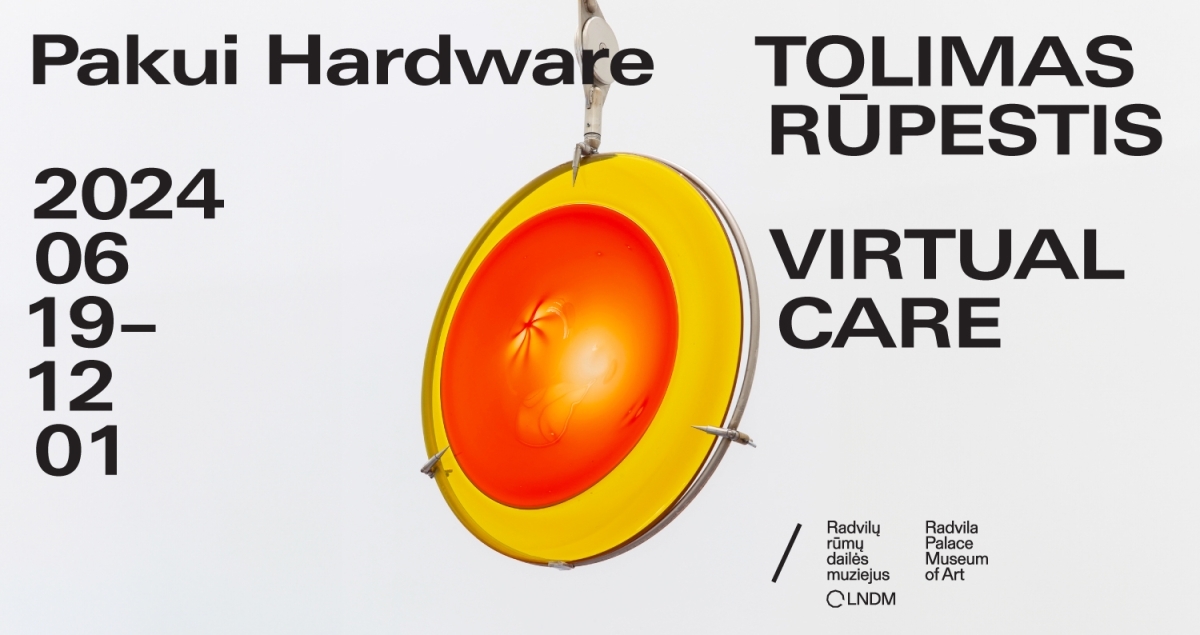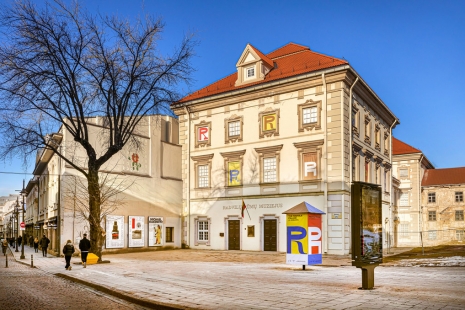The historic hall of Radvila Palace is transformed into an environment that resembles a clinical surgery or hospital room, where human presence, with the exception of the visitors’ own physicality, is replaced by technology. Suspended between the physical and the virtual, the bodily and the digitised, the space is inhabited by transparent thermoformed ‘bodies’ abstracted into sculptural biomorphic shapes. Influenced by Lithuanian artist Marija Teresė Rožanskaitė’s paintings from the 1970s and 80s, the sculptures merge technology, draperies, organic and synthetic materials into abstracted states.
As researcher Jeannette Pols notes, there is no pure ‘cold’ technology and ‘warm’ human body – it is always a subtle and complex interaction between these poles. Virtual Care is not seen here as something inherently threatening, but rather as a mesh of human-technology-economy actions and actors. The installation was conceived before the Covid-19 pandemic hit the world with all of its repercussions, when telemedicine was still a niche form of treating the patients. With the pandemic, however, virtual care became the dominant form of getting help from one’s doctor. After the pandemic, the prescient questions that the work raises around health data gathering and exploitation, as well as the limited access in neoliberal health care, remain as urgent as before.
Organiser: LNMA Radvila Palace Museum of Art
Architects: Isora x Lozuraityte Studio
Architect-coordinator: Aleksandras Kavaliauskas
Graphic designer: Vytautas Volbekas
Textual editor and translator: Alexandra Bondarev
Coordinator: Viltė Visockaitė
The artwork was commissioned by the Baltic Centre for Contemporary Art (Gateshead, UK).





